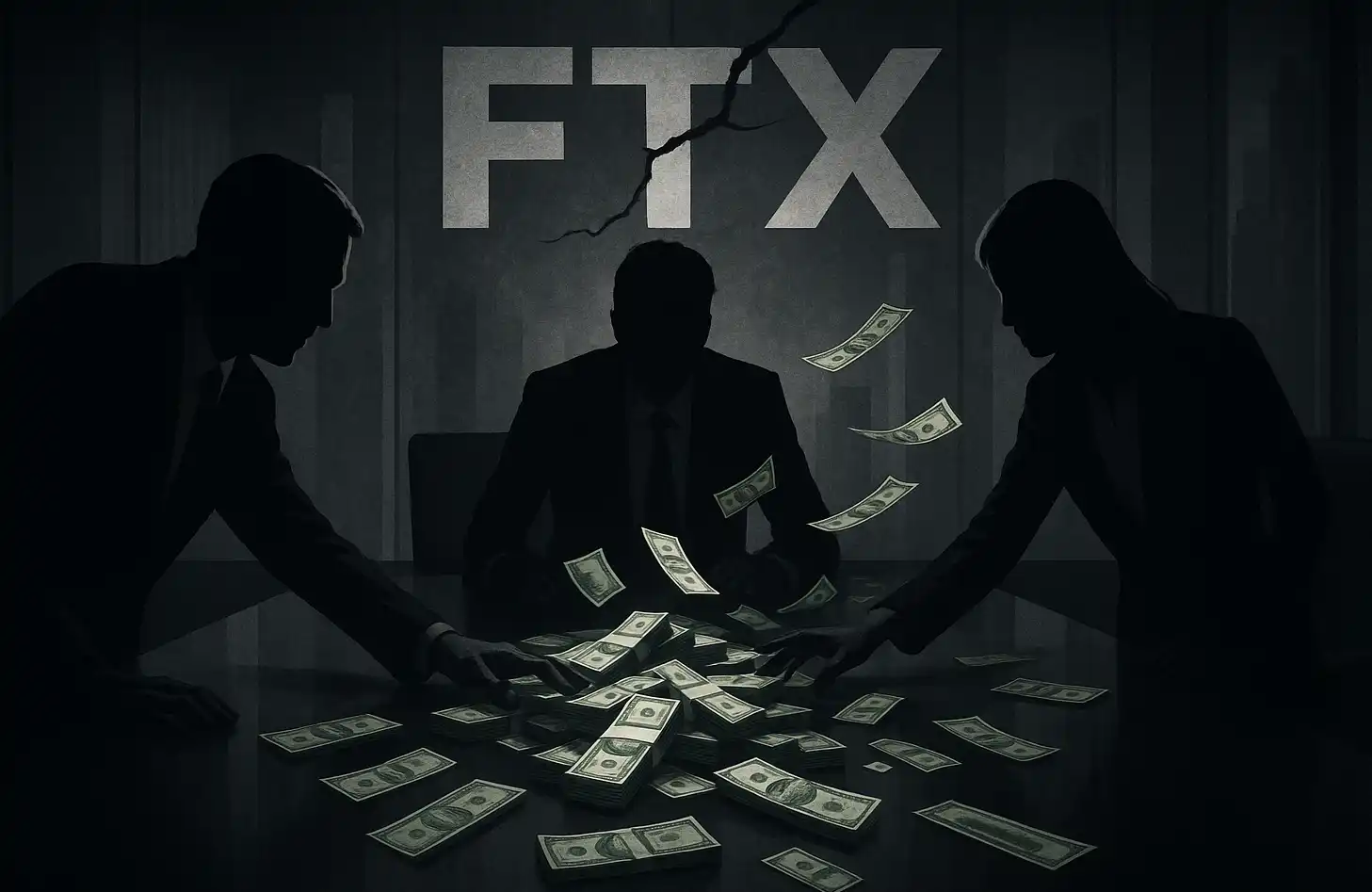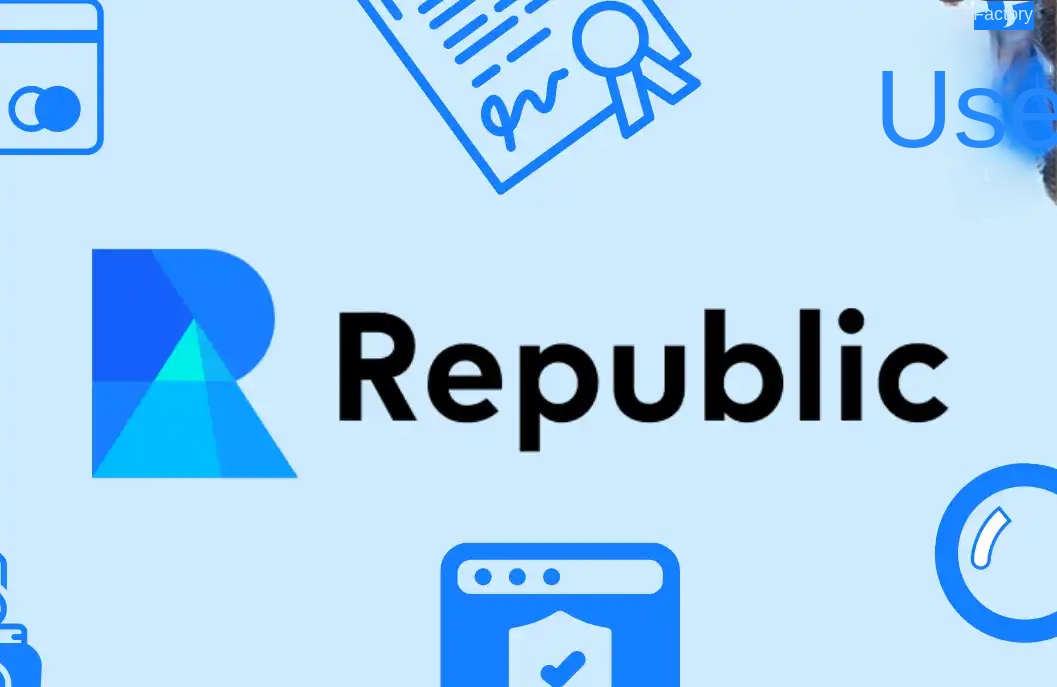In the face of an increasingly crazy market, what will be the next hot narrative?
Original title: How Crazy is the Market and What's Next
Original author: Ignas
Original translation: Lucy, BlockBeats
Editor's note:
Ethereum Dencun upgrade is approaching, Bitcoin halving is also coming, and the sentiment of the crypto market is rising higher and higher as Bitcoin breaks through $60,000. Against this background, crypto researcher Ignas wrote an article to conduct an in-depth analysis and observation of the current dynamics of the cryptocurrency market, and put forward the future outlook for major blockchain projects such as Ethereum, Bitcoin and Solana.
The article explores the technical upgrades, market performance and potential risks of different blockchain projects, and expresses unique insights into the key trends and development directions in the cryptocurrency field. BlockBeats translated the original text as follows:
Cryptocurrencies are rising, airdrops are pouring in, but the euphoria of the market apex is yet to come.
So where are we now and what will happen in the coming months?
I believe there are some crypto-native drivers that can continue to be bullish. But first, I want to share this week's airdrop farm.
This Week's Airdrop Farm
· Ethena: If you hold stablecoins, there is finally a farm for you. Ethena's USDe generates an annualized yield of 27% through a triangular arbitrage strategy. Exchange for USDe and provide LP to the Curve pool to earn points. I will share more thoughts on Ethena in this blog.
· FlashTrade: Flash trade allows trading in gold, silver, foreign exchange and cryptocurrencies. A low-development protocol on Solana. Their unique feature is a dynamic NFT based on the evolution of transaction history, no token yet.
· Nostra: Lending and trading on Starknet. I am bullish on it because the Cairo development language limits the deployment of Aave and other major lending protocols on Starknet. This will allow Nostra (or zkLend) to become the main liquidity hub on Starknet.
· Merlin Chain: The new, hot BTC Layer 2 solution backed by OKx. Stake BTC, ETH, stablecoins, or Bitcoin native assets to earn points through farming. 20% of the total MERL supply will be distributed via airdrops.

This is my third crypto cycle and the market seems to get crazier with each one. Numbers no longer make sense as irrational panic buying attracts retail players who don’t understand market caps or fully diluted valuations.
I wrote a post in November 2023 about how to navigate the crazy bull market.
We are not there yet, the meme proxies of market apex have not yet appeared: Coinbase app has not topped the Apple Store, there are no crypto ads during the Super Bowl, retail FOMO has not yet appeared.

How Inflated Are Markets Right Now?
The second most important article in my personal experience focuses on how we can get more tokens at higher valuations by creating new stories.
In 2017-18, the entire cryptocurrency market bubble was inflated by ICO tokens. These tokens lack technical innovation and are supported only by white papers and compelling stories.
The bull run in 2020-21 is more complicated.
In the DeFi and CeFi sectors, leverage is accumulating rapidly. Leverage on Grayscale's "Widowmaker" transaction is accumulating rapidly, while centralized lending companies are lending to each other with little knowledge of where the funds are really going.
DeFi has swelled with innovations in liquidity mining (rewarding you with governance tokens for providing liquidity) and lending protocols like Aave and Maker that enable on-chain leverage.
We’ve also invented new token models like the Olympus OHM (3,3) Ponzi scheme and SNX (used to mint sUSD) to exploit their ecosystems.
The problem is that with every bull run, we’ve made it easier to print tokens. Before ERC20, printing tokens was complicated. Bitcoin forks like Bitcoin Cash, SV, and Gold required expensive POW machines.
So where are we now in the 2024-25 bull bubble?
Yes, bubbles have always formed in crypto.

Bitcoin funding rates are at all-time highs across all CEXs, which is worrisome. We have positive funding rates, which is bullish as traders are betting that the market will go up. As long as the market doesn’t drop too much and longs aren’t liquidated.

On-chain DeFi data is healthier and more bullish as leverage appears low (but growing).
Aave is quietly seeing an increase in TVL as the most liquid lending market. Typically, borrowers deposit ETH/BTC and other assets to borrow stablecoins to buy more ETH/BTC or use the stablecoins for other tax-friendly uses.

DeFi's TVL reached $75 billion, which is still 270% away from its all-time high of $175 billion on November 11, 2022. However, lending rates are rising across the board in the DeFi space. Ipor's index shows that the annualized interest rate for borrowing can be as high as 10%.

Another important factor to watch is on-chain liquidation. Defillama has a dashboard, but it hasn't been updated for several weeks.

Where do we see inflation now?
There are several focus points for market inflation and leverage.
The first "inflation" here is the issuance of new tokens. I can create 1 billion IGNAS tokens and sell 1 to you at $1, then the total market value of IGNAS will reach $1 billion.
For more information on this, see the thread below.

The problem here is convincing you to buy my tokens. To do this, I will create a new "Research4YouBaby" protocol, launch points, and sell you a very attractive story.
You will deposit ETH/SOL/stablecoins into my protocol to get points because you want to claim the airdrop, you think it is free money. Other speculators are doing this too. The higher the TVL, the more confidence the market has that the protocol is the future of finance.
This is great news for my protocol because I have just built a loyal community and I collect fees from all the TVL. The Research4YouBaby protocol has found product market fit (PMF).
But I am not the only smart protocol developer because everyone is giving out points and it is a feast.
Sure, points are inflating at a crazy rate, but points are not tokens. My goal is to wait for the peak of hype and then launch my token. Jito timed the release of JTOs well, Jupiter did better.
However, both tokens are dumping.
The initial hype led to very high fully inflated valuations (but low circulation) because people who missed the airdrop ended up buying from the secondary market. Ongoing unlocks will have a significant impact on price.
You may have bought JTO or JUP because there were some hot tokens to buy. But in 2021-22, all tokens are boring and no one wants to buy them.
However, for every hot airdrop, someone needs to eat up the "this protocol is the future of finance" narrative and buy the tokens. If you bought JTO, JUP, and are currently losing money, you might reconsider buying a new hot token in the future.
Thankfully, the rise in BTC and ETH prices has fueled the market as speculators can sell their BTC/ETH to buy shitcoins. But once BTC and ETH start to fall, you can imagine what will happen.
A bit off topic, but protocols issuing tokens are becoming complacent.
They think that the longer they hold onto their credits, the more users and TVL they will get. But the more tokens issued in the market, the less cash people have to buy their shitcoins, and timing the market is critical.
So, we are issuing tokens.
You need to track the price action of new tokens to determine the market demand for them. Right now, the market is sending mixed signals as JUP and JTO are falling in price, but DYM, TIA, and PYTH are doing well.
The narrative for TIA, PYTH, and DYM is stronger than JTO and JUP because by holding TIA, PYTH, and DYM, you believe that you will get more shitcoin airdrops. This may work for a while, but at a certain point, airdrops will become less and less frequent until no one cares about getting a few dollars in an airdrop, and people will sell TIA, PYTH, and DYM if they don't provide other value propositions.
In short, with each new hot token, the amount of money invested and the attention of users are being diluted. At some point, we will reach a stage where the amount of money entering the market will not be enough to sustain the number of tokens being issued in the market, and we will face a serious collapse.
While we are not there yet, we are issuing new tokens at a rapid pace. Here are the two main categories that facilitate token issuance:
· RaaS (Rollup as a service) allows for the easy launch of a chain or protocol in a few minutes. Dymension, AltLayer, Caldera, even Arbitrum L3 chain, etc. Dymension alone should have hundreds of RollAps. Think about who will buy these tokens?
· Restaking is a multi-layered token issuance machine:
AVS: dApps that use re-staked ETH to enhance their utility are called AVS. For example, AltLayer is also an AVS protocol. There are multiple AVSs coming soon, and more will be launched after the Eigenlayer mainnet launch.
LRT Protocol: Every liquidity re-staking protocol will have a token.
Then there is a second type of inflation and leverage in the system, from token derivatives.
LRT (Liquidity Re-staking Token)
LRT is the most obvious one, and I think it may cause some systemic risk.

If you don’t know what LRT is yet, check out my previous post.
Like KelpDAO’s rsETH, LRT ETH is a complex ETH derivative asset that is impacted by:
· Multiple ETH LSTs (like ETHx, stETH, etc.). If a vulnerability occurs in one LST, rsETH will also be impacted.
· Multiple AVS protocols. The ETH backing rsETH will eventually be used to secure the AVS protocol. You could lose your ETH in a slashing event.
· Eigenlayer itself. Hopefully Eigenlayer has not been hacked.
Right now, we are seeing LRT ETH being integrated into the DeFi 1.0 ecosystem. I believe that soon we will see Aave and multiple stablecoin protocols accepting LRT as they offer higher yields.
Restaking + Liquidity Restaking is already in the top 10 TVL, and Eigenlayer isn't even fully live yet. God help us all.

But I don't think it poses any systemic risk at this point. For more on the risks, read this study.
Ethena - The New Hot Stablecoin
Secondly, there is a new non-Ponzi protocol in town: an old trick, the stablecoin.
Ethena is backed by half of the crypto industry insiders, and you may see a lot of posts about it.
In fact, it is built on a simple but powerful concept: deposit stETH to mint USDe stablecoins at a 1:1 ratio. The price peg is maintained by shorting ETH on various DEX and CEX platforms, thus maintaining a hedged position.
This USDe generates stETH yields (about 4%) and provides different annualized yields depending on the exchange's positive funding rate. Since there is a tendency to hold long positions, the funding rate remains positive, and the longs pay the shorts. If you are not sure how the funding rate works, check out the post below, which has a simple explanation.

The shorting part is tricky, as some funds have to be deposited in CEXes, but there are also many decentralized perpetual futures exchanges.
What happens if one of the exchanges goes bankrupt? What happens if withdrawals are closed? What happens if the funding rate goes negative? These are all problematic points on the X.
Ethena is relatively small right now, with 250 million USDe issued. However, with its cleverly designed points (called shards), a referral program that offers a 10% reward for referring others and using the referral, and backing from high-profile investors like Binance, it will grow.
It may even become "too big to fail."
Currently, Ethena's dominance in open interest on selected exchanges is 3.57%, but what happens when their dominance grows? The impact of this is significant, but its impact on the market will take time to show.
In any case, this is a direct increase in market leverage through open interest, as well as an increased reliance on stETH.
What problems may arise? I don't know, but my principle is to start farming operations in the early stages. Also, if you hold stablecoins in this market and stay out of it, this is a new hot opportunity for you. They will conduct activities for three months, or until USDe supply reaches $1 billion.
Note that you can’t mint USDe with stETH yourself (as this also requires KYC), so you’ll need to buy USDe and deposit it in one of the Curve pools to get 20x the points.
Risks are growing, cycle farming?
Finally, there may also be some risk of over-leveraging, via airdrop farmers cycling their positions across lending protocols to maximize points. You can deposit SOL on MarginFi to borrow USDT, then redeem USDT for more SOL on Jupiter, then deposit SOL on Kamino to borrow more USDT.
What happens next? There are at least a few big drivers for the three major blockchains.
Ethereum
Ethereum has at least 4 positives.
First, with the arrival of Bitcoin ETF, market attention has begun to shift to Ethereum ETF.
Secondly, Ethereum will undergo an important Dencun upgrade in March or April, including 9 EIPs, of which EIP-4844 (proto-dansharding) is the most important.
Proto-danksharding aims to reduce transaction fees on L2 and reduce the cost of data availability by introducing a new segmented space called "blobs". It will reduce L2 transaction fees by 10 times, which may increase network activity on L2 and potentially boost the price of L2 tokens.
Not only that. Soon after the upgrade (maybe not that soon), Uniswap v4 will be launched. V4 requires EIP-1153: "Temporary Storage", which is essential for Uniswap v4 to reduce network costs.
Uniswap v4 introduces "hooks", which are programmable contracts that operate at different stages of the liquidity pool lifecycle. It transforms Uniswap from a protocol to a platform that developers can build on top of it.

For more on Uniswap v4 and other exciting releases, please refer to my previous blog article.
The launch of V4 could boost UNI price (in the short term, as the token is difficult to hold for the long term).
Third, Eigenlayer will be launched on the mainnet in the first half of 2024.
ETH’s APY will rise, attracting more attention to Eth. It can be clearly seen that as riskier assets begin to fall out of favor and crazy players turn their attention back to ETH, I believe that bringing more tokens to the market will further boost bullish sentiment on ETH, as profits from these tokens will eventually flow into ETH and BTC.
Thanks to LRT, we can get the income of Ethereum staking (about 5%) + Eigenlayer re-staking rewards (about 10%) + LRT protocol token issuance (about 10% or even more). When Eigenlayer is fully online, we can expect about 25% APY on ETH. On Pendle, you can already get 40% APY, refer to "Re-staking continues to be hot, LRT war panorama and participation guide".
Finally, the amount of ETH staked is increasing. This is a key indicator because ETH stakers show confidence in long-term ETH price increases.

I believe tracking the dynamics of withdrawals and deposits is a useful indicator if you want to time the market top.
Bitcoin halving
"Halving" is both an interesting meme and a serious business.
The meme aspect is obvious, as Bitcoin rises in value around the halving event. However, there is also a serious side to it, which encompasses multiple aspects.
First, the block reward will decrease from 6.25 bitcoins to 3.125 bitcoins, reducing “sell” capacity by approximately $225 million per month. Second, the halving will boost the narrative of the Bitcoin ecosystem, the effects of which are already being felt.
Stack’s STX is up 75% in a week as the team prepares for the Nakamoto upgrade. This will reduce block times from an unusable 10 minutes to 5 seconds. This is a major upgrade that makes Stacks finally fun to play with. I expect to see many more dApps and airdrops in the Stacks ecosystem.

Stacks is not the only (but arguably the main) Bitcoin L2 solution. The Bitcoin L2 narrative is gaining traction, especially with multiple L2s, notably Merlin, scheduled to launch around the halving event.
But these L2s are complex, so do your own research.

Finally, at block 840,000, the founders of Ordinals Theory will launch the Runes protocol. It will kick off a new era of crypto trading that even Solana players will envy.
Overall, the future looks good for Bitcoin with institutional investment flowing into Bitcoin ETFs and the high level of enthusiasm brought about by BTCFi.
Solana
I must admit that Solana has disappointed me, and actually made me quite sad.
It has been producing blocks without interruption for almost a year now. The resulting decline in bullish sentiment around Solana has led to a significant catalyst to restore market confidence in the form of Solana Firedancer. Solana Firedancer aims to make Solana faster and more secure while improving its decentralization. This is a new version of the software used by validators (nodes that process transactions) on the Solana network.

This is important because it will help Solana process more transactions at once, with the goal of reaching 1 million transactions per second. This could make Solana faster than many traditional payment systems, such as Visa.
Firedancer also focuses on making the network more secure by changing how parts of the network interact, which could help prevent hacks and make it more stable. Firedancer is being developed by Jump Crypto and is scheduled to be fully launched in summer 2024.
Overall, Mert’s strategy seems to work well here: Ethereum could steal the spotlight from Solana until Firedancer goes live.

But this is not a 100% guarantee. It is not impossible that Solana continues to experience glitches even after the Firedancer upgrade.
「Original link」
Welcome to join the official BlockBeats community:
Telegram Subscription Group: https://t.me/theblockbeats
Telegram Discussion Group: https://t.me/BlockBeats_App
Official Twitter Account: https://twitter.com/BlockBeatsAsia
 Forum
Forum OPRR
OPRR Finance
Finance
 Specials
Specials
 On-chain Eco
On-chain Eco
 Entry
Entry
 Podcasts
Podcasts
 Activities
Activities









